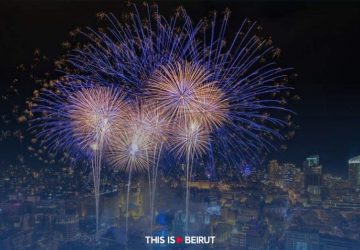Listen to the article
Lebanon, a country rich in history and culture, celebrates the New Year in a way that bears witness to its ancestral heritage. Far from today’s ostentatious festivities, Lebanese New Year traditions are imbued with generosity, solidarity and a deep sense of community.
At the heart of Lebanese New Year traditions is the symbolism of white, a color embodying purity, renewal and hope. This color, omnipresent in both clothing and cuisine during the celebrations, represents a deep desire to start anew, thus illustrating the spirit of Lebanese culture.
White Clothing: A Symbol of New Beginnings and Harmony
In Lebanon, the custom of wearing white clothes during the New Year is laden with deep meanings. This color, representing purity and peace, is chosen to symbolize the transition to a new year under the sign of hope and prosperity. By adopting this color, Lebanese families and communities express a common desire for peace, unity and renewal. This custom, far beyond a simple sartorial tradition, is a symbolic manifestation of the willingness to turn the page on past challenges and embrace the coming year with optimism and harmony.
Cuisine in White: A Manifestation of Happiness and Prosperity
The New Year in Lebanon is also characterized by a specific culinary tradition: the predominance of white dishes. Dishes such as shish barak, kebbeh bi laban, or laban emmo are essential in this celebration. The white color of these dishes, symbolizing purity and good fortune, reflects aspirations for prosperous and joyous days. This choice of color is not random but a deliberate decision to represent a promising and bright beginning. Sharing these dishes strengthens family and community bonds, spreading feelings of joy and optimism.
The Morning of Gifts: An Exchange of Generosity and Recognition
The first day of the year in Lebanon is marked by the tradition of exchanging gifts, rooted in ancient Roman practices with the goddess Strenia. This day, known as Sabah el Kheir or Eid el Bestrayneh, is a special time for elders to offer gifts to the younger ones and for the more affluent to share with the less fortunate. Children wake up early to wish Sabah el Kheir and receive gifts from their relatives, thus reinforcing family and community ties and teaching values of respect, gratitude and solidarity.
The Eve of December 31st: A Time of Entertainment and Prediction
New Year’s Eve is an opportunity for families and neighbors to gather for relaxation and play. Card games, used as omens for the coming year, add a playful and close-knit dimension to community relations. The stakes, often almonds and nuts, contribute to the festive atmosphere and are shared at the end of the evening.
A Precious and Living Cultural Heritage
New Year’s traditions in Lebanon offer a glimpse into a rich and dynamic cultural heritage. They highlight the importance of values of solidarity, sharing and happiness, which are at the heart of everyday life and celebrations. These customs bear witness to a rich past and a deep sense of community, constituting an invaluable heritage to preserve and pass on. They reflect the essence of Lebanese identity, shaped by history and culture, and a strong sense of belonging.
A Symbol of Communion and Hope
The color white, a central element of the New Year traditions in Lebanon, transcends its mere aesthetic to become a powerful symbol of communion, hope and renewal. This color serves as an annual reminder of the values of purity, unity and optimism dear to Lebanese culture. In preserving these traditions, Lebanese people honor their rich cultural heritage and cultivate a sense of hope and positivity for the future, welcoming the new year with a spirit of renewal and shared joy.





